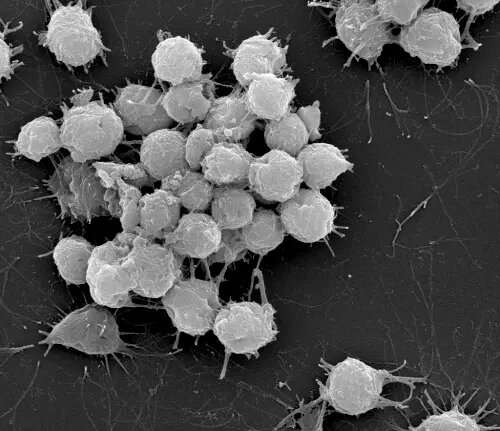This article has been reviewed according to Science X's editorial process and policies. Editors have highlighted the following attributes while ensuring the content's credibility:
fact-checked
peer-reviewed publication
trusted source
proofread
Earliest animal likely used chemical signaling to evolve into multicellular organism

The earliest animal likely used chemical signaling to evolve from a single cell to a multicellular organism, according to a study led by an Indiana University Bloomington scientist. The findings provide new information about how one of the biggest transitions in the history of life on Earth likely occurred.
J.P. Gerdt, assistant professor of chemistry in the IU Bloomington College of Arts and Sciences, led the study, along with Núria Ros-Rocher of the Institute of Evolutionary Biology in Barcelona, Spain. Their findings are published in the Proceedings of the National Academy of Sciences.
"The general view is that animals evolved from a unicellular organism, and this research helps explain how that may have happened and how those cells chose whether to be together or on their own," Gerdt said. "Our results help us understand more about the first animals and their ancestors."
The study focused on one of the closest living relatives of animals, Capsaspora owczarzaki, which lives in snails. Capsaspora can form multicellular aggregates—cells that cluster together and adhere to each other—in a way that is similar to sponges or hydra.
To conduct their study, researchers systematically added and removed components of a liquid growth media to Capsaspora to determine which components regulated the cells adhering together. They discovered that calcium ions and lipids spurred multicellular aggregation. They also found that the process was reversable, and that when lipoproteins decreased, the cells separated.
"The transition from being a single cell to a multicellular organism is a really big step," Gerdt said. "We now have a better understanding of how the ancestors of animals could have made that change using chemical cues."
Gerdt is working on additional studies involving Capsaspora. The snail that Capsaspora resides in transmits a parasitic disease, and Capsaspora can kill the worm that causes the disease. If researchers can determine how the organism does that, there could be future medical applications.
The ongoing research aligns with the mission of the Gerdt lab at IU Bloomington, where chemists are trying to discover the chemical "languages" of micro-organisms. Microbes use chemicals to communicate with each other, and then they use other chemicals to cooperate with or compete with each other. The Gerdt lab is a team of molecular detectives who apply chemical tools like mass spectrometry and nuclear magnetic resonance spectroscopy to decipher which molecules trigger cooperative and competitive responses in microbes.
Ultimately, they hope to use this knowledge to devise new approaches to defeat pathogens and promote the microbiomes that help humans.
More information: Núria Ros-Rocher et al, Chemical factors induce aggregative multicellularity in a close unicellular relative of animals, Proceedings of the National Academy of Sciences (2023). DOI: 10.1073/pnas.2216668120
Journal information: Proceedings of the National Academy of Sciences
Provided by Indiana University




















